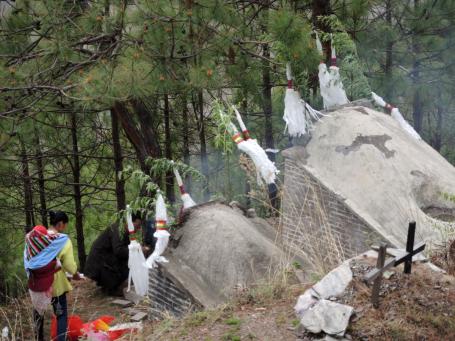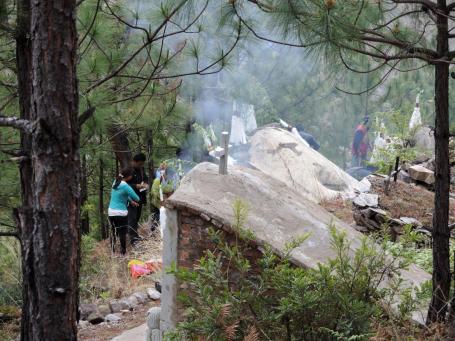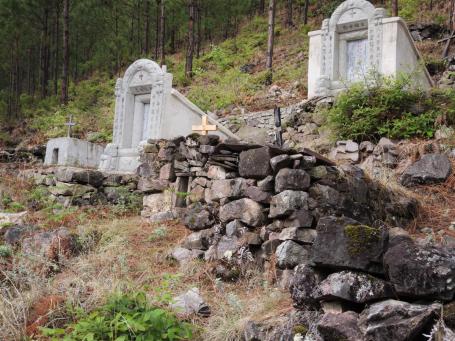Eriberto P. Lozada, God Aboveground: Catholic Church, Postsocialist State, and Transnational Processes in a Chinese Village (2002), Chapters 1 and 3.
All Souls’ Day (November 1) is an important annual holiday in Catholic communities around the world, often commemorated by spending time cleaning and tending to familial gravesites. Most of my students, however, had never commemorated All Souls’ Day in this way.
During my fieldwork in Transylvania, I visited graves with my host families each year on All Souls’ Day. One time, I accompanied a father with his two teenage daughters, home for the weekend from boarding school, to the graveyard. As we walked among the family plots, he took this opportunity to show them where his own grave would be located and then asked them why their village’s graveyard was different than others in nearby villages. He was clearly proud when one replied that their village’s cemetery was located in the center of the village whereas others were at the edge of town.
I told this story in class to illustrate Eriberto Lozada’s argument that Catholic funerary rituals often serve as vehicles for “localization” processes (Lozada 2001). Lozada did fieldwork in a Catholic and ethnic-Hakka minority village he called, “Little Rome,” in the Jiaoling valley in Guangdong, China. Lozada writes about how many young people from Little Rome have traveled to urban centers for work, and in the story I told from my own fieldwork, the excitements and anxieties provoked by social mobility set the stage for ritual-based localization processes for my Transylvanian acquaintances, as well.
Lozada’s description of All Souls’ Day in Little Rome centers on a large procession involving most of the village’s 1,000 community members (2001: 144-6). Such a major event requires significant logistical planning, and Lozada notes that the local Chinese government had taken pains to preserve order and safety. One year, the noise of firecrackers set off during All Souls’ Day was “deafening” (146). The next year, he notes, the graveyard “was quiet.”
Lozada presents this information about an important change made to this Catholic ritual without overt interpretation. Pointing to this passage, I invited my students to reflect on why the government had prohibited firecrackers. A number of my students felt that the decision simply made sense and did not require much critical scrutiny. As one student put it, “Of course they’d do that.” Reactions seemed to convey the feeling that preserving safety during rituals was a natural desire.
I then asked if Lozada would have included this detail in his description, and included it so prominently, if he felt the same way: that wanting to preserve safety in this way was commonsensical. If Lozada is concerned to show that state sovereignty is not constructed in competition with the aboveground Catholic Church in China, but rather is “reconfigured” in this interaction, how might the decision to ban firecrackers during All Souls’ Day illustrate that (2001: 10)?
My overall goal in focusing the conversation on the firecrackers was to build a bridge between two weeks’ readings: John Burdick’s Blessed Anastacia and Lozada’s description of rural Chinese Catholics. Our conversation about the Inculturated Mass had centered around Sonia and Marisela’s experience of feeling the presence of candomblé spirits when the Inculturated Mass’ organizers had used drums and food offerings typically associated with these traditions. When one student referred to the drums “symbolizing” Sonia’s previous experience with divine beings, we looked closely at Burdick’s text and noted that Sonia had said she felt threatened because the spirits were really being called down to participate in the Inculturated Mass. Our discussion from them on focused on the link between “dangerous” religion and the presence of invisible spirits. But I didn’t fail to take notice that it was a challenge for my students to “play down” or “minimize” someone’s “dangerous” experience of divine presence by calling it “symbolic.”
In the case of Lozada’s book, we reframed these questions about “dangerous” religion by asking what interest state officials would have in changing Catholic rituals to make them “safe.” What reasons do these state officials have for “controlling” Catholic rituals by altering them, beyond the stated interest in safety? Do the liberation activists who have designed the Inculturated Mass also have “ulterior” motives for changing the ritual of the Mass?


